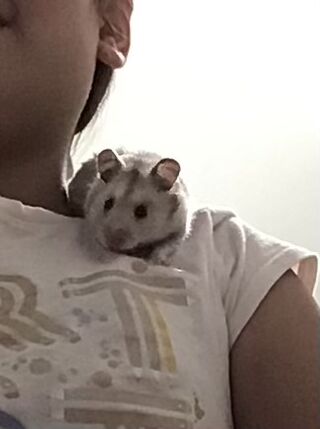Anxiety
Why Anxiety Can Be Good for Us: The Parable of the Hamster
Sometimes anxiety helps us in ways we don't expect.
Posted January 10, 2022 Reviewed by Davia Sills
Key points
- Instead of looking at emotions as having a positive or negative valence, it can be helpful to notice whether they are activating or deactivating.
- Both positive and negative emotions can be activating in positive ways, such as by stimulating our creativity.
- Anxiety is an activating emotion that we can leverage to cope with deactivating emotions like sadness, which can block motivation.
We mainly distinguish emotions as being either positive or negative. This is especially the case for difficult emotions like anxiety. It’s called valence, and we equate negative valence with “bad” emotions and positive with “good.”
But another way to describe emotions transcends valence and gives insight into how even our most difficult emotions can be leveraged for good. This distinction is whether an emotion is activating or deactivating. Activating moods, like anger, joy, and anxiety, increase our energy levels and motivate us to do something. Deactivating emotions, like sadness, depression, relaxation, and serenity, do the opposite.
How do we know that emotions work this way?
Take research on creativity. A 2008 study conducted by researchers in Europe and Israel induced activating and deactivating moods in participants. They asked them to write an essay about a situation that provoked strong emotions or to watch emotionally intense movie scenes. Then they measured the subjects’ creativity by asking them to brainstorm ways to improve the quality of teaching in the psychology department, jotting down as many ideas, solutions, or suggestions as they could think of.
Deactivating moods didn’t have any effect on creativity, but activating moods, regardless of valence, prompted more fluency and originality. People who felt more anxious (also angry and joyful) came up with more ideas, and their ideas were more innovative and out-of-the-box. One reason, researchers reasoned, that anxiety, in particular, increased creativity was because it prompted people to stick with brainstorming and problem solving longer. They persisted.
In other words, it isn’t whether moods are positive or negative that influences creativity; it’s whether they’re activating or deactivating—whether our moods move us.
The parable of the hamster
Activating emotions like anxiety not only help us persist but can also help us balance out deactivating emotions that can disrupt creativity. Last summer, our family hamster, Chestnut Houdini Tiwary, a beautiful and bold little palomino-colored Syrian hamster, passed away. We gave her the middle name “Houdini” after she escaped for the third time from her cage—which was 5 feet off the ground—and gnawed away the entire bottom of the closet door where we kept her food. Because it was closed. And she wanted in.

Her death was a shock. We’d only had our little Amazon warrior for a few months when we noticed she had stopped eating and drinking much, and her breathing seemed labored. Two days later, I was rushing her to an emergency animal hospital, where she was diagnosed with a respiratory infection and sent home with antibiotics and painkillers. By the next morning, we found her collapsed by her drinking bowl, barely breathing. We took her out of the cage, and as I held her in my hands, she gasped her last breath.
I was blindsided by how devastated I felt when she died. I dreamt of her; I cried on and off for a week; I was assailed by remorse and regret that I didn’t get her to a vet sooner. I was grieving. So much so that, while working on a book project, the words just wouldn’t come to me. I felt distracted and depleted. My creativity and fluency seemed to be at a standstill. Meanwhile, my attempts to feel better weren’t really helping—crying to my sister Katie on the phone, trying to talk myself out of feeling sad, or having a soothing cup of tea (and, to be honest, a glass of wine). I felt stuck.
Then, I realized what I really needed—a bit of anxiety to jumpstart my mind and body. I started with something anxiety-provoking but fun—I went river rafting on the rapids of Deerfield River up in Massachusetts with our friends, the Tehs. That energized me a bit.
Later, I made a list of the deadlines I was facing and what the consequences would be if I missed them or was late. I wrote it all out, a full-on worry induction. That seemed to do the trick, and thankfully—for my publisher and me—I got back on track soon after. There was still sadness and the unexpected misty eyes or catch in the throat when I spoke about Chestnut, but anxiety helped me shift from feeling dull and flat to shiny and full of ideas again.
This experience was a powerful reminder to me that anxiety doesn’t always get in our way. It can often be an asset and an ally. Thank you, anxiety!


